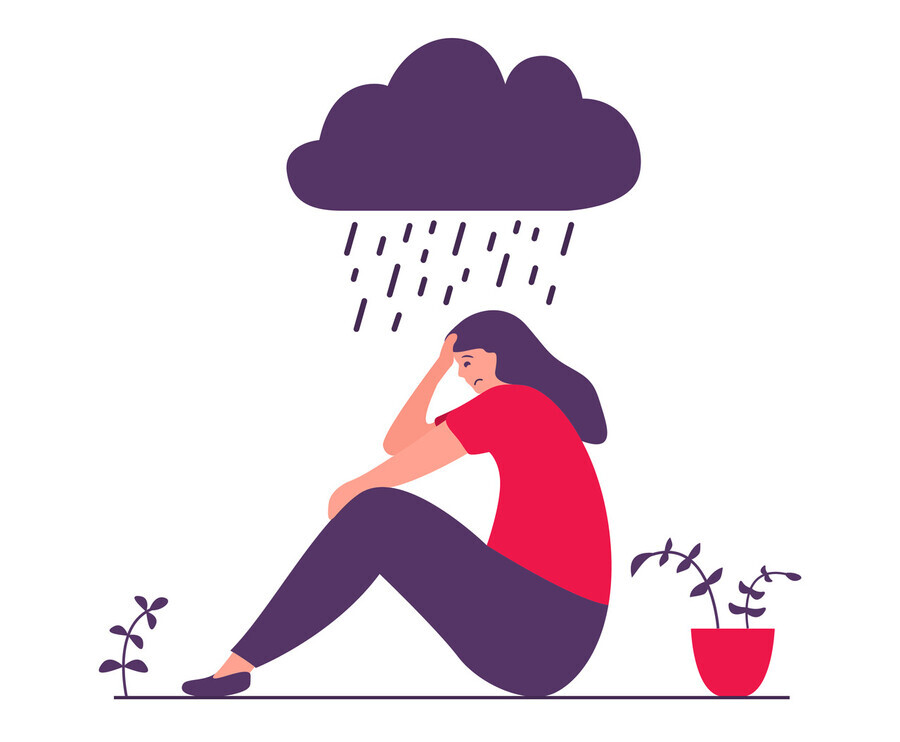hankyoreh
Links to other country sites 다른 나라 사이트 링크
Over 1 in 4 marriage migrant women in Korea report feeling depressed

Rates of depression among foreign national women who migrated to South Korea for marriage have been found to be twice that of Korean women.
According to a report on women’s health statistics for 2023 released by the Korea National Institute of Health on Monday, rates of depression among marriage migrant women in 2021 were 27.4%, almost double that of Korean women, 14.1%.
Although depression rates among marriage migrant women diminished from 36.7% in 2015 to 27.9% in 2018, the figure is still staggeringly high compared to their Korean counterparts.
Data from 2015 showed that younger marriage migrants exhibited the highest rates of depression. The rate then went down as the age increased until age 60, when it shot back up, forming a U pattern. The recently released data, however, shows no discrepancy between age groups. In the recent report, the depression rate was 28% for women in their 20s, 27.3% for women in their 30s, 27.4% for women in their 40s, 27.3% for women in their 50s, and 26.6% for women in their 60s.
Rates of depression were especially high among women with low income or poor fluency in the Korean language. Among marriage migrant women living in households with a monthly income of 2 million won or lower (around US$1,529), 37.9% reported symptoms of depression. For women living in households with a monthly income between 2 million and 2.99 million won, it was 29.3%. For a monthly household income between 3 million and 3.99 million won, it was 26.4%. Between 4 million and 4.99 million won, it was 24%. For households earning a monthly income of 5 million won (US$3,822) or more, it was 22.5%.
Among marriage migrant women with a low level of fluency in Korean, 31.8% reported experiencing symptoms of depression, as opposed to 23.2% among women who exhibited a high level of fluency.
At 31.5%, women from the Philippines exhibited the highest rates of depression, followed by Thailand (30.2%), Cambodia (30.1%), China (27.9%), Vietnam (25.9%), Japan (23.6%), and ethnic Koreans from China (23.3%). The length of sojourn did not appear to have a bearing on depression rates.
The depression rate was determined by the number of women who reported that they felt sadness or despair that negatively impacted their day-to-day activities twice a week or more throughout the past year. The Korea National Institute of Health has been collecting and publishing data pertaining to reproductive health, illnesses and ailments, and health behavior as it relates to individual life cycles of women residing in South Korea since 2014.
By Jang Soo-kyung, staff reporter
Please direct questions or comments to [english@hani.co.kr]

Editorial・opinion
![[Editorial] Intensifying US-China rivalry means Seoul must address uncertainty with Beijing sooner than later [Editorial] Intensifying US-China rivalry means Seoul must address uncertainty with Beijing sooner than later](https://flexible.img.hani.co.kr/flexible/normal/500/300/imgdb/original/2024/0517/8117159322045222.jpg) [Editorial] Intensifying US-China rivalry means Seoul must address uncertainty with Beijing sooner than later
[Editorial] Intensifying US-China rivalry means Seoul must address uncertainty with Beijing sooner than later![[Column] When ‘fairness’ means hate and violence [Column] When ‘fairness’ means hate and violence](https://flexible.img.hani.co.kr/flexible/normal/500/300/imgdb/original/2024/0516/7417158465908824.jpg) [Column] When ‘fairness’ means hate and violence
[Column] When ‘fairness’ means hate and violence- [Editorial] Yoon must stop abusing authority to shield himself from investigation
- [Column] US troop withdrawal from Korea could be the Acheson Line all over
- [Column] How to win back readers who’ve turned to YouTube for news
- [Column] Welcome to the president’s pity party
- [Editorial] Korea must respond firmly to Japan’s attempt to usurp Line
- [Editorial] Transfers of prosecutors investigating Korea’s first lady send chilling message
- [Column] Will Seoul’s ties with Moscow really recover on their own?
- [Column] Samsung’s ‘lost decade’ and Lee Jae-yong’s mismatched chopsticks
Most viewed articles
- 1[Editorial] Transfers of prosecutors investigating Korea’s first lady send chilling message
- 2[Exclusive] Unearthed memo suggests Gwangju Uprising missing may have been cremated
- 3Xi, Putin ‘oppose acts of military intimidation’ against N. Korea by US in joint statement
- 4[Column] US troop withdrawal from Korea could be the Acheson Line all over
- 5[Column] When ‘fairness’ means hate and violence
- 6[Editorial] Intensifying US-China rivalry means Seoul must address uncertainty with Beijing sooner t
- 7China, Russia put foot down on US moves in Asia, ratchet up solidarity with N. Korea
- 8Spotlight turns to Hyundai Group Chairwoman’s visit to North Korea
- 9Records show how America stood back and watched as Gwangju was martyred for Korean democracy
- 10‘Shot, stabbed, piled on a truck’: Mystery of missing dead at Gwangju Prison